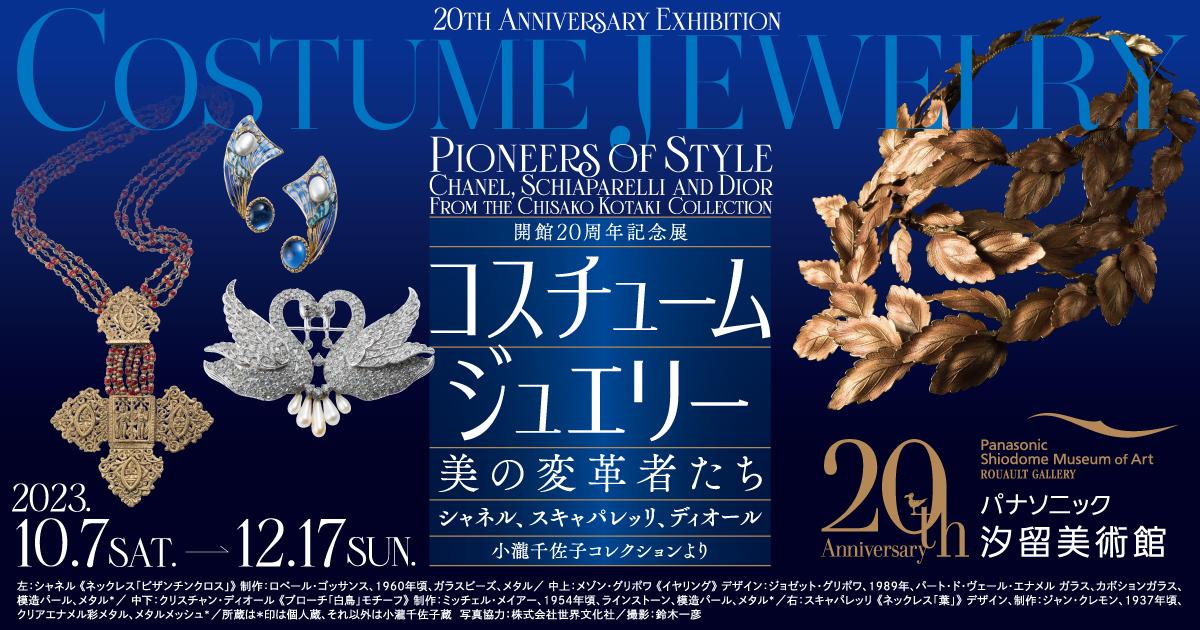20th Anniversary ExhibitionCostume Jewelry Pioneers of Style Chanel, Schiaparelli and Dior From the Chisako Kotaki CollectionClosed

Exhibition overview
A Glittering Symbol of Freedom
Costume jewelry may not incorporate gems and precious metals, but its striking designs, carefully coordinated with specific outfits, have captivated fashionistas for generations. Pioneered by Paul Poiret in the early 20th century and popularized by Gabrielle “Coco” Chanel, these accessories became an essential component of the Parisian fashion scene before spreading across the Atlantic to the United States. This exhibition is the first in Japan to present a comprehensive history of costume jewelry, showcasing collection pieces from Dior and Schiaparelli and exquisite necklaces and brooches produced by preeminent jewelry houses on commission from such haute couture brands. Also on display are inventive pieces from European designers such as Line Vautrin and Coppola e Toppo and American-style costume jewelry from Miriam Haskell and Trifari, who popularized the style among people of all social classes. With over 400 pieces from the best collections in Japan, this exhibition explores how the artisans’ skillful manipulation of their materials produced works of stunning beauty.
- Dates
- October 7 Saturday - December 17 Sunday, 2023
- Hours
- 10 a.m. - 6 p.m. (Open until 8 p.m. on Nov. 10, Dec. 1, Dec. 15, and Dec.16.)
Admittance until 30 minutes before closing time.
- Closed
- Wednesdays (Except for Dec. 13)
- Admission
- Adults: ¥1,200
Visitors aged 65 or over with valid documentation: ¥1,100
Students (High school and college): ¥700
Admission is free for children in middle school or younger. Admission is free for disability passbook holders and up to one accompanying adult. Click here to access the discount voucher page.
- Organizers
- Panasonic Shiodome Museum of Art, Mainichi Shimbun
- Supervision
- Chisako Kotaki
- Special Adviser
- William Wain (Costume jewelry researcher in London)
- Academic Adviser
- Deanna Farneti Cera (Costume jewelry researcher in Milan)
- Cooperation
- chisa、Sekai Bunka Publishing Inc.
- Planning support
- Curators Inc.
- Supporters
- Ambassade de France / Institut Français du Japon, Minato City Board of Education





